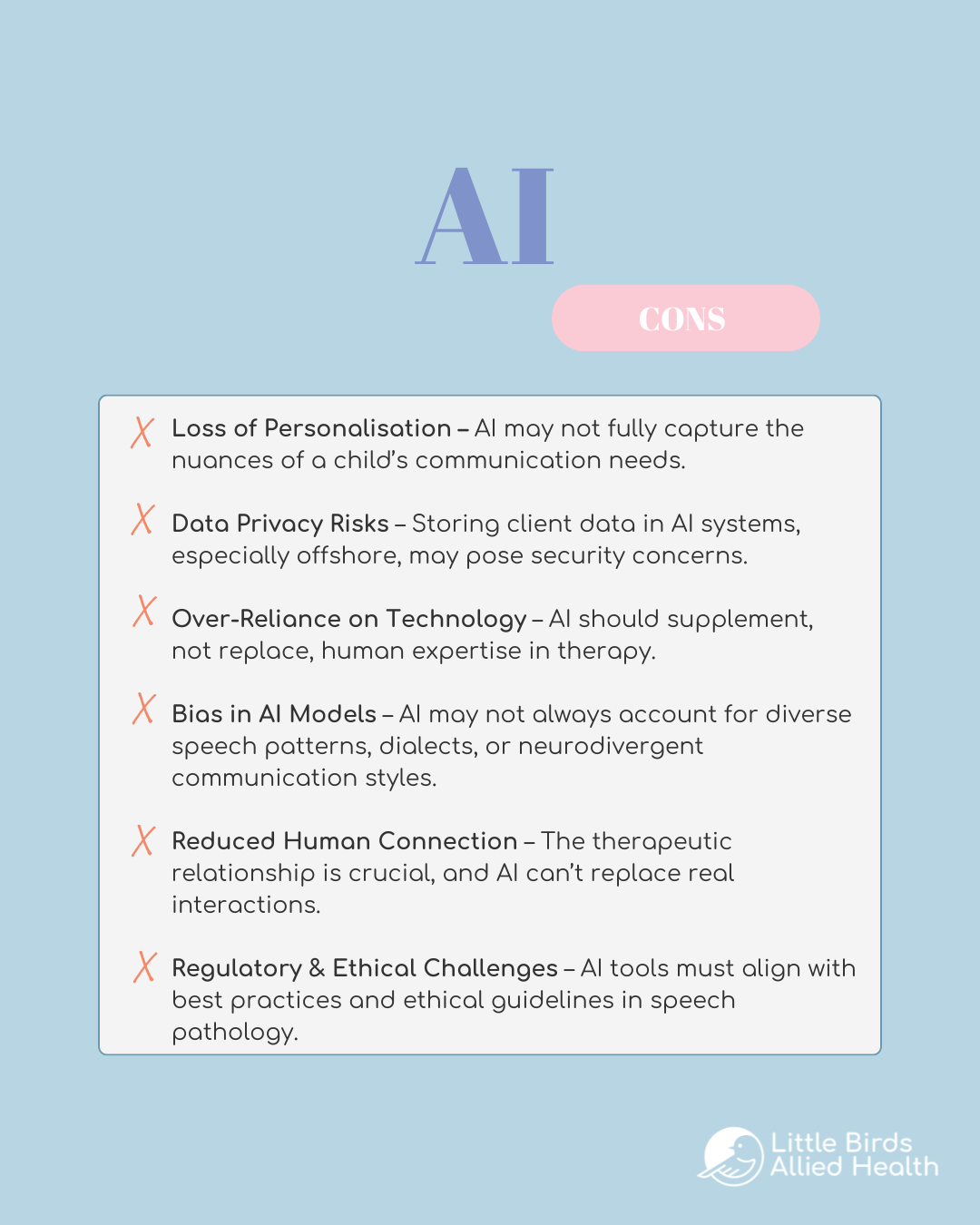AI in Healthcare (Part One)
Where do you start with AI?
“I have no idea!” was my initial thought when someone asked me about AI use. Without realising, AI has been rapidly growing and becoming part of our norm from ChatGPT to tailored social media advertisements. Without realising it, I too was using it or being influenced by it. My next question was “Do AI and health care mix?”. I initially hesitated about starting the AI journey at our clinic, but I knew it was inevitable. People were already beginning to use it, and I felt like I needed to be one step ahead. I wanted to create safe use policies to mitigate and manage risks and have control of this rapidly evolving AI world.
There have been giant leaps with AI in healthcare. AI supports diagnostics, intervention, automation, and optimisation, creating quicker, more efficient, and more accurate outcomes. It sounded promising! After doing hours of research, I also discovered the advantageous side of AI that could be harnessed at our clinic and the infinite opportunities. This opened another meaning to modern therapy solutions for children, which raised many questions. “How could we use AI in therapy?” and “How could we do innovative speech therapy?”. I must admit that this is an exciting space, but do we have too much ‘positive propaganda’ being preached to us? We can easily be swept away with all the flashy ‘new intelligence’ without considering the risks and the laws around AI use. In this blog series, I will summarise my findings and reflections on my recent discoveries.
The Role of AI in Healthcare
After ‘jumping down the rabbit hole’ with the initial ‘AI Healthcare’ Google search, I found that the consensus is that AI has shown its potential to support patient engagement, diagnosis and analysis, reduce human error, and reduce administrative burdens (e.g., voice-transcription apps that transcribe and summarise interviews between clinicians and patients). “How does this translate?” It can offer faster, more accurate and personalised intervention plans, thus improving quality outcomes and productivity. “Sounds amazing right?” However, it comes with a big BUT, which we will discuss later.
In terms of managing administrative burdens, I have been looking at transcription apps and have not been 100% satisfied with them. Even though it is not perfect, the apps can reduce time spent on note-taking, requiring edits here and there. It also aids in categorising sections more efficiently and instantly, making case notes and meetings more precise and concise.
In terms of assessment analytics, AI can help with assessment analysis by pairing the results with observations to create goals, strategies and examples to some degree. I have found it to be mediocre for more complex cases and even in simple cases, require editing. However, some of the generated ideas could be useful to prompt the clinician in the right direction or probe for further investigation.
Although AI has shown incredible potential, our clinic’s Team Leader and I have agreed that early career staff should minimise their use of AI. This is to prevent reliance on AI and instead develop their analytical skills, clinical judgment, and reasoning skills. Our senior staff are also reluctant to use parts of AI due to its inability to generate clinically accurate results and recommendations. Although AI has shown that it is beneficial in generating ideas, suggestions, and strategies, clinicians are strongly advised to apply their clinical judgement and reasoning to thoroughly analyse the information before implementing it.
Despite its advantages, implementing AI in healthcare comes with challenges, including data privacy concerns, integration with existing systems, and the need for training healthcare professionals to use these tools effectively and safely, which will be explored in the next part of the series.
I have created a post to summarise the pros and cons of AI:
AI Pros & Cons
AI Pros
AI Cons




